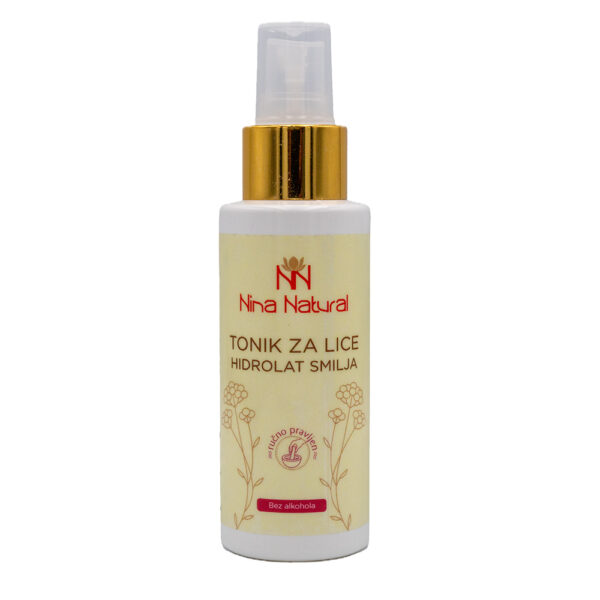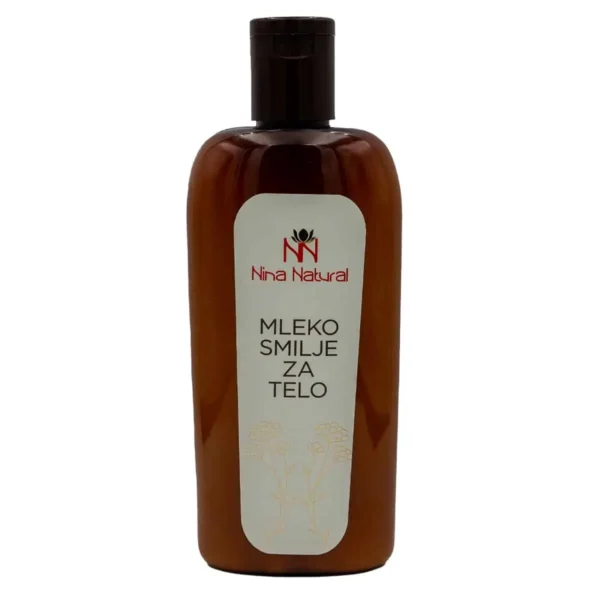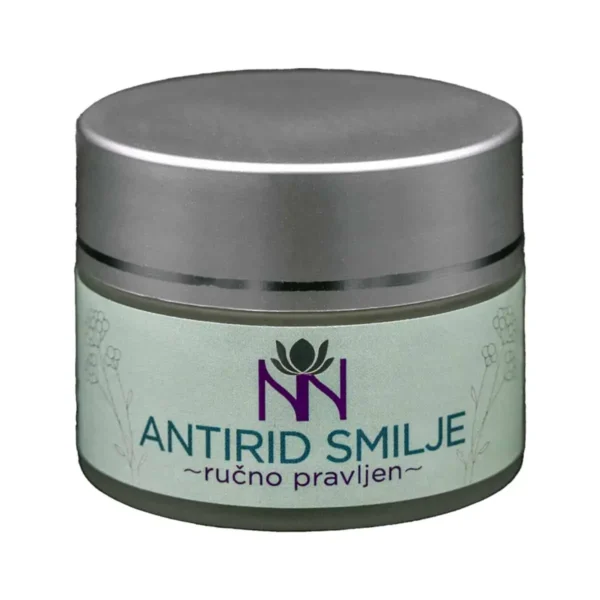Summer Skin Care: How to Protect Your Skin from the Sun with Natural Products
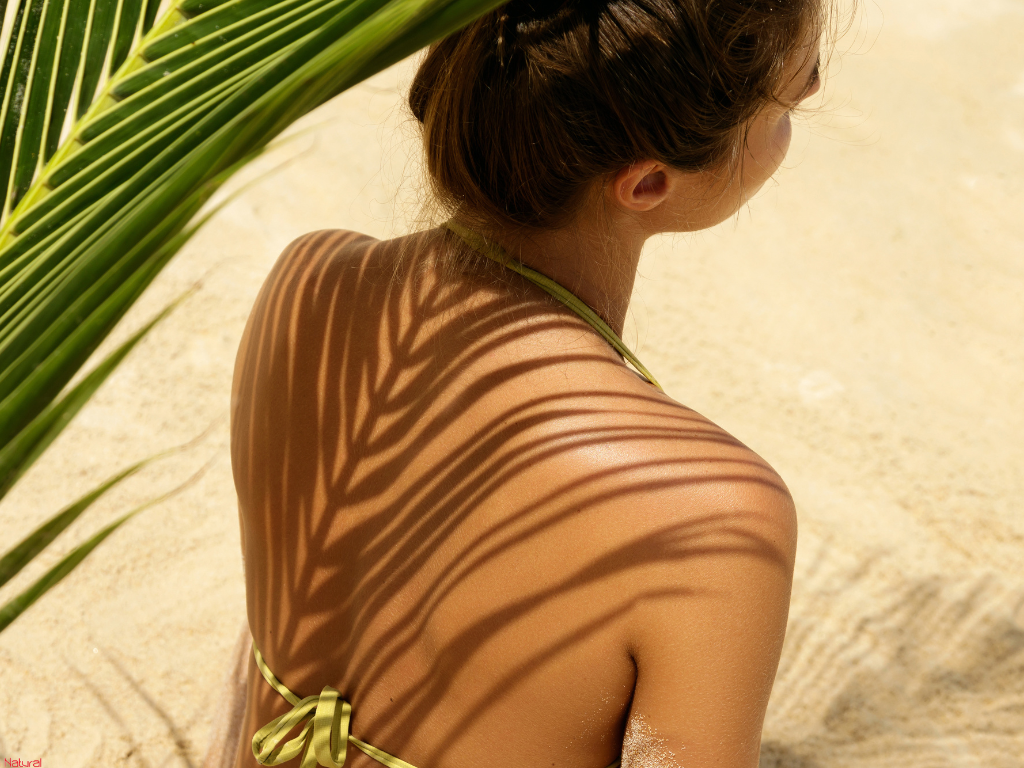
Summer is the season when our skin undergoes the greatest test. Intense UV rays, high temperatures, and increased sweating can leave permanent consequences on the skin if we don’t protect it properly. According to World Health Organization data, over 3 million cases of skin cancer are diagnosed annually, most of which are directly linked to excessive sun exposure.
Traditional sunscreens often contain chemical filters that can cause allergic reactions, disrupt hormonal balance, or harm the environment. Natural sun protection represents a safer alternative that combines effective protection with skin care, utilizing the power of natural oils, mineral filters, and plant extracts.
Basics of Sun Protection
UVA and UVB Rays – What You Need to Know
Solar radiation is divided into two basic types that affect our skin differently:
UVB rays make up about 5% of the total UV spectrum and remain on the skin’s surface. They are responsible for burns and redness that we see immediately after sun exposure. UVB rays are most intense between 10 AM and 5 PM and are the main indicator of SPF factor on creams.
UVA rays represent the remaining 95% of the spectrum and penetrate deeper into the skin, all the way to the dermis. They act throughout the day, even through clouds and glass, causing long-term damage such as premature aging, hyperpigmentation, and deeper structural changes to the skin.
Both types of radiation can lead to the development of melanoma and other forms of skin cancer, which is why broad-spectrum protection that covers both UVA and UVB rays is important.
SPF Factors – Myth and Reality
The difference between SPF 30 and SPF 50 is smaller than most people think. SPF 30 blocks 97% of UVB rays, while SPF 50 blocks 98% – the difference is only 1%. What’s more important is proper application and regular renewal of protection.
Quantity matters – studies show that most people apply only a quarter of the recommended amount of cream. For an adult’s entire body, about 35ml of product is needed, which means a standard 200ml bottle should last a maximum of 6 applications.
Duration of protection depends on numerous factors: sweating, swimming, rubbing against clothing, and natural weakening of filters in the sun. Renewal is recommended every 2 hours, or after each swim.
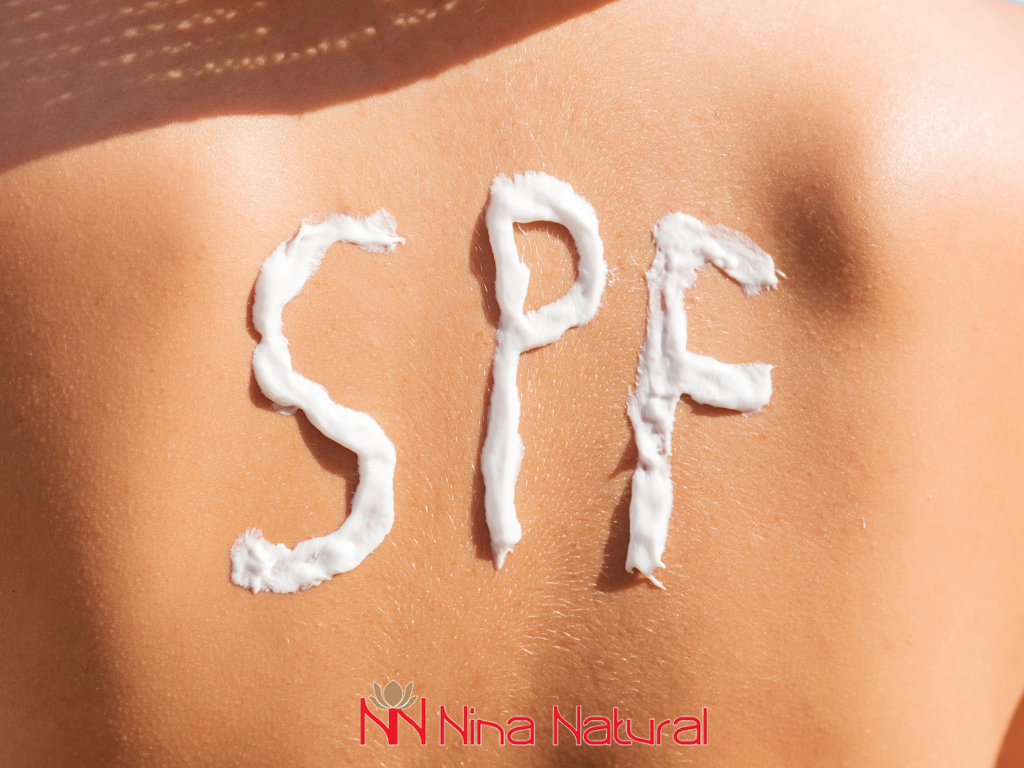
Skin Types and Different Protection Needs
Fair and sensitive skin (type I and II) can burn in 10-15 minutes without protection and needs a high SPF factor (50+). This skin often doesn’t tan but only reddens and peels. For such skin, natural sun protection can be an alternative for spring and autumn.
Normal skin (type III) can be exposed to sun for 15-30 minutes without consequences and gradually tans. SPF 30-50 is usually sufficient with proper application. This means that such skin would be suitable for natural sun protection in shorter intervals during summer.
Dark skin (type IV-VI) has natural protection thanks to a higher amount of melanin, but can still suffer from UV radiation. SPF 15 is the minimum, and a higher factor is recommended for prolonged exposure. This skin would also be suitable for natural sun protection during summer.
Natural Sun Protection Products
Oils with Natural SPF Factor
Natural oils represent the first line of defense when it comes to products that enable natural sun protection. Different oils have different levels of natural UV protection:
Raspberry seed oil (SPF 28-50) is considered the most powerful natural UV filter. This oil has exceptional anti-inflammatory properties and is ideal for skin prone to irritation, eczema, and rosacea. It’s rich in ellagic acids that neutralize free radicals created by UV radiation. This oil can be an ideal natural sun protection.
Carrot seed oil (SPF 38-40) is an excellent choice for anti-aging care. Its antioxidant action helps preserve collagen and elastin, while beta-carotene enhances the skin’s natural protection. Regular use improves skin elasticity and tone.
Hazelnut oil (SPF 10-30) absorbs quickly and doesn’t leave a greasy trace, making it ideal for oily and combination skin. It has astringent properties and stimulates circulation, helping maintain healthy skin appearance. It doesn’t provide great protection, but in combination with other oils can be ideal for natural sun protection.
Coconut oil (SPF ~7) provides moderate protection but is valuable for its moisturizing properties. It doesn’t clog pores and gives skin a natural glow. It’s especially useful for protecting hair from UV damage. It doesn’t have high SPF properties, so it’s best used for hair care or as one of the ingredients when making natural sun protection products.
Sesame oil blocks about 30% of UV rays and has a long tradition of use in Ayurvedic medicine. It’s rich in antioxidants and naturally stable, meaning it won’t go rancid in the sun. This is very important – and that’s why this oil is often an ingredient in natural sun protection products.
Helichrysum oil (SPF 15-20) represents a special treasure in natural sun protection. Natural skin protection with helichrysum oil is definitely possible! Helichrysum italicum, known as the anti-aging oil, contains powerful antioxidants like helicrysin that protect skin from photo-damage. This oil also stimulates cell regeneration and helps heal minor sun damage to the skin. Combined with other oils, helichrysum oil enhances overall protection and adds anti-aging benefits. Even when used alone, it will wonderfully care for and protect your skin.
Mineral Protection – Zinc Oxide as a Natural Filter
Zinc oxide is one of the safest and most effective natural UV filters. Unlike chemical filters that absorb UV rays, zinc oxide physically reflects them from the skin.
Advantages of mineral filters:
- Act immediately after application
- Don’t penetrate the skin but remain on the surface
- Provide broad-spectrum protection (UVA and UVB)
- Are hypoallergenic and suitable for the most sensitive skin
- Don’t have an expiration date like chemical filters
How to properly use zinc oxide:
- Choose non-nano form (particles larger than 100nm)
- Use 15-25% concentration for SPF 30+
- Wear a mask during preparation to avoid inhaling powder
- Mix well with base oils to avoid white traces
Natural Ingredients for Sun Protection
Beta-carotene from carrots is a natural precursor to vitamin A that enhances the skin’s natural protection. It can be used through diet or supplements.
Vitamin E is a powerful antioxidant that neutralizes free radicals created by UV radiation. It also helps stabilize other oils and extends their shelf life.
Shea butter provides natural UV protection (SPF 3-4) and deeply moisturizes the skin. The cinnamic acid it contains helps protect against UV-B rays.
Aloe vera doesn’t provide significant UV protection but is irreplaceable for soothing skin after sun exposure. It contains polysaccharides that stimulate cell renewal and reduce inflammation.
DIY Recipes for Natural Sunscreens
Simple 3-Ingredient Recipe
Ingredients:
- 100ml coconut oil (at room temperature)
- 2 tablespoons zinc oxide powder (non-nano)
- 1 tablespoon carrot seed oil or raspberry seed oil
Preparation:
- Leave coconut oil at room temperature to completely melt
- Slowly add zinc oxide, stirring constantly
- Add carrot or raspberry oil and mix well
- Transfer to a glass jar
Usage: Apply 30 minutes before sun exposure, renew every 2 hours. This product provides approximately SPF 15-20 and will nicely care for your skin.
More Complex Recipe with Mineral Protection
Ingredients:
- 60ml sweet almond oil
- 30ml helichrysum oil
- 20ml coconut oil
- 15g beeswax
- 20g zinc oxide powder (non-nano)
- 5g shea butter
- 10 drops vitamin E
Preparation:
- Melt beeswax with coconut oil in a double boiler
- When the mixture cools, add remaining oils
- Slowly add zinc oxide, constantly stirring with a mixer
- Add shea butter and vitamin E
- Stir until completely cooled
This recipe provides SPF 25-30.
Water-Resistant Version
For a water-resistant version of any recipe:
- Add 10-15% more beeswax
- Include raw soy lecithin (5% of total mass) as a natural emulsifier
- Use jojoba oil instead of part of the coconut oil
Special Recipe for Sensitive Skin
Ingredients:
- 40ml raspberry seed oil
- 30ml hazelnut oil
- 20ml helichrysum oil
- 10ml calendula oil
- 15g zinc oxide
- 2 drops lavender essential oil
Note: These recipes are not intended for sensitive, fair skin and children’s skin.
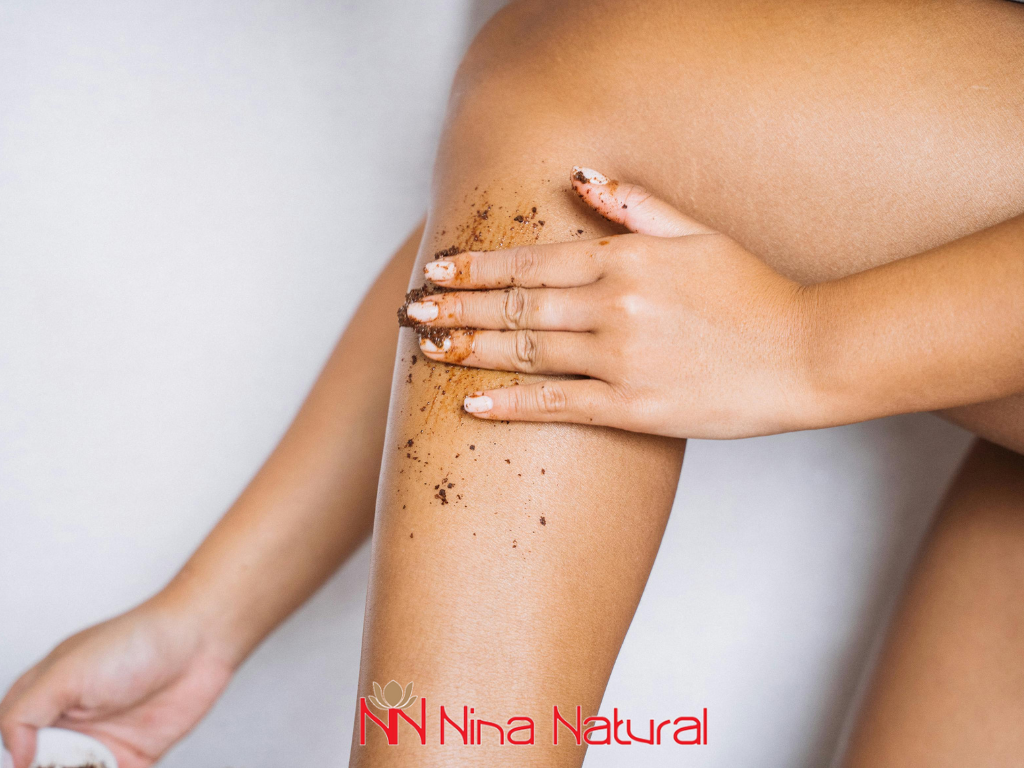
Summer Skin Preparation
Spring Skin Preparation
Preparations for summer begin in spring when the skin needs to recover from winter months:
Hydration as foundation – Well-hydrated skin better tolerates UV radiation. Use natural moisturizing creams with as few synthetic ingredients as possible.
Removing dead cells – Gentle natural exfoliation, 1-2 times a week, helps prepare skin for sun. If you don’t have an exfoliant, sugar or sea salt can be excellent alternatives.
Gradual sun acclimatization – Start with short exposure (10-15 minutes) and gradually increase time. Avoid tanning beds – artificial UV radiation doesn’t prepare skin for natural sun.
Nutrition for Healthy Skin
Skin is protected not only from the outside but also from within. Diet can affect the skin’s ability to regenerate and protect itself.
Brazil nuts – Just 1-2 nuts daily provides the needed amount of selenium, a mineral that protects skin from UV damage.
Chickpeas – Excellent source of proteins needed for skin renewal, as well as complex carbohydrates for energy.
Bell peppers – Contain three times more vitamin C than citrus fruits! Vitamin C is crucial for collagen synthesis and protection from free radicals.
Hydration – Minimum 2 liters of water daily, more if you sweat or stay in the sun. Add lemon or cucumber for additional antioxidants.
Supplements That Protect from Within
Astaxanthin – The most powerful natural antioxidant, 6000 times stronger than vitamin C. Protects skin from UV damage from within.
Beta-carotene – Natural precursor to vitamin A that enhances skin’s natural protection and gives it a golden glow.
Vitamin E – Works synergistically with vitamin C in protecting cell membranes.
Omega-3 fatty acids – Reduce inflammation and help maintain healthy skin barrier.
Daily Summer Care Routine
Morning Routine
- Gentle face cleansing with lukewarm water or mild toner that won’t disrupt skin’s natural pH
- Light moisturizing cream with natural ingredients like calendula or helichrysum
- Natural sun protection application – Apply 30 minutes before going out, especially on face, neck, and other exposed areas
- Lip protection with balm containing natural oils like helichrysum or calendula
Helichrysum Facial Cleansing Tonic
Contains Helichrysum hydrolat, rose water, and panthenol Alcohol and preservative-free formulation Gently cleanses, refreshes, and revitalizes the skin Boosts microcirculation and deeply hydrates the facial skin Soothes and rejuvenates the skin Removes makeup residues and limescale that accumulates in pores due to hard water Tightens pores and prepares the skin for further care Convenient spray bottle for easy application Handcrafted in small batches
During the Day in the Sun
- Renewing protection every 2 hours, or after each swim or intense sweating
- Additional protection measures – Wide-brimmed hat, UV sunglasses, light long-sleeved clothing from natural materials
- Hydration – Drink water regularly, don’t wait to feel thirsty
Evening Routine After Sun
- Cool shower with lukewarm water to avoid further drying the skin. Avoid hot water
- Soothing lotions with urea, vitamin E, and helichrysum oil for caring for sun-exposed skin
- Regenerative masks for whole body skin once a week with ingredients like honey, avocado, or yogurt
Helichrysum Body Lotion
Contains Helichrysum flower extract, sweet almond oil, and olive oil Enriched with provitamin B5 and vitamin E Deeply hydrates, soothes, and regenerates the skin Suitable for all skin types, including sensitive skin Lightweight texture that absorbs quickly Handcrafted in small batches
Special Care for Different Body Parts
Face Care
Facial skin is thinner and more sensitive than body skin:
- Use special face products with higher SPF factor
- Add anti-aging ingredients to evening routine
- Pay special attention to delicate eye area skin and use appropriate anti-wrinkle products
Helichrysum Eye Cream
Contains beeswax, almond, calendula, olive, and sunflower oils Enriched with Helichrysum flower extract and vitamin E Fragrance-free formulation Intensely nourishes and hydrates the delicate skin around the eyes Reduces the depth of existing wrinkles and slows the formation of new ones Does not cause eye irritation Handcrafted in small batches
Body Care
- Exfoliation 2x weekly to remove dead cells and achieve even tanning
- Moisturizing after bathing while skin is still damp to “lock in” moisture
- Special care needed for elbows and knees that dry out faster
Hair Care
Hair can also suffer from UV radiation:
- Use natural oils with SPF factor like coconut or argan oil
- Wear a hat or scarf for additional protection
- Apply moisturizing hair masks once a week
Lip and Foot Protection
- SPF lip balms or natural oils (coconut, shea butter)
- Daily foot moisturizing every evening, especially if wearing sandals
After-Sun Care
First Aid for Skin That Reddens After Sun Exposure
If burns occur:
- Cold compresses with cold water or cooled chamomile tea
- Aloe vera gel or helichrysum macerate
- What not to do: apply ice directly to skin, apply essential oils to fresh burns, peel skin
Skin Regeneration
Moisturizing lotions with panthenol, aloe vera, or helichrysum oil help restore skin barrier.
Natural ingredients for recovery:
- Honey as natural antibiotic
- Yogurt with lactic acids that hydrate
- Avocado rich in vitamins E and K
When to seek medical help: If blisters, fever, chills, or signs of infection appear.
Maintaining Tanned Color
- Gradual tanning with regular moisturizing helps maintain healthy complexion
- Proper hydration is key to preventing peeling and maintaining color
Common Questions About Natural Sun Protection
Do Natural Products Really Protect?
Scientific basis: Studies confirm that certain natural oils have measurable SPF factor. However, their effectiveness is limited compared to modern synthetic filters.
Limitations of natural filters: Most natural oils provide SPF 5-30, which is sufficient for short exposure or less intense sun.
Combining with mineral protection: Adding zinc oxide or titanium dioxide significantly increases the effectiveness of natural formulas.
How Often Should Natural Protection Be Renewed?
Factors affecting durability:
- Sweating and swimming
- Rubbing against clothing or towel
- Sun intensity
- Skin type
Signs that reapplication is needed: Skin starts to redden or you feel it “burning.”
Can Natural Creams Replace Commercial Ones?
Advantages:
- No harmful chemicals
- Natural moisturizing
- More environmentally friendly
Disadvantages:
- Lower SPF factor
- Shorter protection duration
- May leave white traces
Situations when SPF 50+ is better:
- Intense sun (mountains, tropical areas)
- Fair, sensitive skin
- Prolonged sun exposure
Mistakes to Avoid
Common Myths About Natural Protection
- “Natural means completely safe” – Even natural ingredients can cause allergic reactions in sensitive individuals
- Overestimating oil SPF factors – Many sources cite unrealistically high SPF factors for natural oils
- Neglecting renewal – Natural protection often lasts shorter than commercial protection
Dangerous Ingredients in Commercial Creams
- Oxybenzone and octinoxate can disrupt hormonal balance and harm coral reefs
- Nano particles of zinc oxide and titanium dioxide can penetrate skin and potentially damage cells
- Parabens and fragrances are common causes of allergic reactions and contact dermatitis
Sustainability and Environmental Aspects
Environmental Impact
Coral reef protection – Chemical filters like oxybenzone cause coral bleaching. Natural products don’t harm marine ecosystems.
Biodegradability of natural products – Natural oils and waxes decompose quickly in nature.
Packaging and recycling – Choose products in glass packaging or make your own in reusable containers.
Economic Advantage
DIY vs. store-bought product costs:
- Homemade cream (100ml): 300-500 dinars
- Commercial natural cream (100ml): 2000-5000 dinars
Longevity of natural products – Most ingredients have a long shelf life and can be used for multiple purposes.
Conclusion
Natural sun protection represents an excellent alternative to conventional sunscreens, especially for daily use and moderate sun exposure. Combining natural oils rich in antioxidants with mineral filters like zinc oxide can provide effective protection with additional skin care benefits.
The key to successful natural protection lies in realistically assessing possibilities and limitations. Natural products are ideal for short sun exposure, darker skin, and daily use, but for intense sun and prolonged exposure, combination with commercial high SPF products is recommended.
It seems that the future of sun protection is in a hybrid approach – using natural products whenever possible, while reasonably supplementing with synthetic filters when circumstances require it. This way we protect both our skin and the environment, while enjoying the benefits of sun without fear of long-term consequences.
Remember: the best protection is one that is consistently used. Regardless of whether you choose natural or commercial products, regular application and responsible behavior in the sun are key to your skin’s health.

